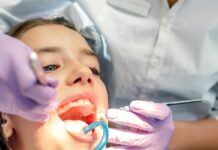Inside the scrotum, testicles are an egg shaped gland. Testicles can be found behind the penis. It is also known as the man’s balls. Testicles play a big role in the male puberty and human reproduction as it produces sperm and hormones such as testosterone. A normal male will have two testicles and be smooth when touched. Even if there is a slight difference between the left and right of testicle, this should not be a great concern. However, when one testicle bigger or hanging lower than the other, this may cause worries. In this article, we will be focusing on a varicocele, a condition which could be causing such an event and medicine needed.
Varicocele is a condition where there are veins that swell in the scrotum. This network of veins can be felt as a “bag of worm” when it is swollen such as in varicocele. You may have heard about varicose vein if you know or had experienced the misshapen vein that is highly visible on the legs or feet, varicocele are somewhat similar to the varicose vein. The difference is the varicocele occurs in the testicular area. This indirectly means that varicocele is exclusively in male and usually between the age of 15 to 25 years old. Despite this, varicocele can be found in 40% of infertile male. It is not fully understood how varicocele affects fertility in male but there is no denying that there is association between the varicocele and male infertility.
Varicocele is caused by the problem of the vein draining the blood from testicles. Vein normally works by having the valve regulating the blood flow to and from the testicle. Thus, when there is vein issue, the valve that is supposed to maintain blood flow is not working properly, it causes the blood to be collected within the scrotum. This causes the vein to dilate which seems swollen or enlarged. In the left testicle, varicocele is a frequent occurrence. There is almost a 40% chance that varicocele occurs on both sides if the left varicocele is identified. A person is likely to develop varicocele if there is family history of varicose vein in legs. In rare occurrences, kidney tumours could be the cause for sudden varicocele.
Although it is not well understood how varicocele affects fertility, there is actually a theory proposed to explain this issue. Varicocele can affect the vein known as pampiniform plexus. This pampiniform plexus is located in the spermatic cord. This cord functions as a tube that holds and carries sperm. Pampiniform plexus is responsible for cooling the blood before it reaches sperm. This cooling system allows sperm to be produced at 34.5 degrees Celsius where the temperature is the most efficient. This also explains why testis is separated from the body trunk. Ultimately, when varicocele occurs, testicle is unable to produce good quality sperm. Varicocele may also cause reduction in testosterone produced which may have an effect on fertility. Large varicocele eventually is said to be the cause of testicular failure.
Varicocele in general does not cause symptoms. This is why varicoceles are often found in routine physical examinations or when a person sees a doctor for infertility issues. Some male with varicocele may actually complain of pain or discomfort. The pain could be aching, throbbing or dull in nature. It is rare for the pain to be sharp or stabbing. The pain or discomfort may be obvious after physical activity or at nighttime. Patients may complain of the heaviness of the scrotum. This heaviness may feel better when the person lies down. The ‘bag of worm’ phenomenon can be felt or seen by patients if varicocele is large enough.
Diagnosis can be made based on medical history and physical examination of the testicles. Physicians often check the testicles while the patient is standing. Valsalva manoeuvre may also be done to check the varicocele. Varicocele is typically confirmed with ultrasound. If there is suspicion of kidney tumour to be causing varicocele, doctors may proceed with imaging tests such as CT scan.
Due to the fact that varicocele can cause infertility problems, patients might want to get themselves treated for the condition to help improve their fertility. The best way to treat varicocele is to get surgery. There are few options for surgery but the common are varicocelectomy, laparoscopic surgery and percutaneous embolization. Treatment is only provided if there are symptoms or fertility issues. If varicocele causes pain or discomfort, pain relief and scrotal support should be enough to ease symptoms.
Also read – Dengue Prevention
In essence, varicocele is a condition where there is enlargement of veins within the scrotum. It occurs in 1 out of 6 males with the likelihood of younger male being affected. Varicoceles are caused by the defective valves within veins in scrotum. Varicocele is harmless but it can be associated with infertility problems that are caused by the low sperm production and low sperm quality. Treatment is not needed if there are no pain symptoms or infertility issues arise.


























